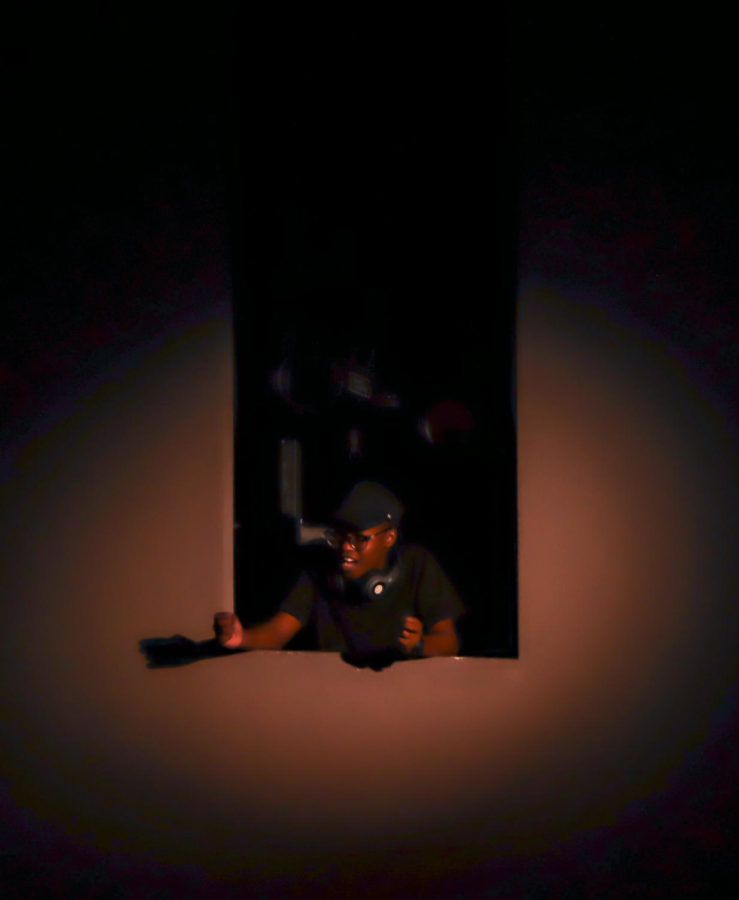The dazzling red and green lights and nostalgic tunes bring us back to what is sometimes described as the most wonderful time of the year. The smell of trees and the tingling of your nose from the low temperatures bring joy because of holidays and family time, but also something more–snow days.
Days off from school are generally considered an enjoyable time, especially when spent in the rare company of snow. A two-hour delay is perfect for catching up on sleep missed from staying up late finishing that project. But what decision-making process leads up to these magical days or even hours?
How does it work?
The person who makes the big decisions for MTHS students is the Edmonds School District (ESD) Superintendent Nick Brossoit.
According to Brossoit, there will be about four or five people contributing to get information to help him make his choice. ESD District Transportation Director Craig Christensen is the leader and supervisor of this data collection procedure.
Additionally, ESD is connected to a weather service called Northwest Weathernet.
“[ESD] monitors the weather before it even snows for the purpose of tracking storms and to see, based on temperature and precipitation, if we have an issue,” Brossoit said.
Christensen receives two weather reports; one for the day and one for the night. If there is a chance of snow, then he will be up at 2 a.m.
If the weather seems as if it may warm up later that day then a delayed start is preferred over a cancellation
“With a delayed start, it’ll be okay to have school that day, so we try to monitor the forecast for temperature, not just the actual snow conditions, early in the morning,” Brossoit said.
Christensen will then call a colleague of his, or even a few, and they divide and conquer.
Brossoit also said that ESD will sometimes have up to three drivers on the road in different parts of the district, all calling Christensen with updates and reports.
They hit the high elevation points first and check those immediately, deciphering the type of snow and how slick it is. Christensen said that if there is no snow, it’s a “relatively slow process.”
If it looks like a potentially dangerous storm of snow or ice is on the way, Christensen will be on the road by 3 a.m., monitoring all of the bus routes to see if their conditions are safe. While he’s out there on the roads, he’s also conversing with the weather service about whether it will warm up or stay in the low temperatures.
Not only do they use the Northwest Weathernet, but they contact a meteorologist for more detailed information. However, this method has not always proved to be a foolproof way to determine whether or not there should be school.
“We’ve found that good meteorologists don’t always get it right either. So sometimes the decision we make at 5 a.m. looks like it was wrong when we look at it at 7 a.m. or even at 10 a.m.,” Christensen said.
Additionally, Christensen calls his colleagues in other school districts, such as Mukilteo and Everett, and takes what they think into consideration.
“Being out, driving around those roads very early in the morning and getting reports from other school districts in the area, I think is the only way you can do it. The only way to really know if it’s dangerous for students to be transported to a school, either through a school bus or through a private vehicle, is to get out there and check and see what the actual conditions are,” ESD School Board member Ann McMurray said.
McMurray continued, saying that snow days are unpredictable and hard to determine by those at home.
“The weather can be very fickle and [the ESD doesn’t always] know, but just because someone hears a report that there’s supposed to be snow or the iPhone shows that there’s going to be snow, that doesn’t automatically mean that the district will close. It does mean the district staff will be alert to conditions beginning very early on the morning on the school day.”
Brossoit will receive a call at about 4:15 a.m. with an update. Then, until 5 a.m, he, Christensen and sometimes others will discuss and contemplate all of the information to make a decision, with the safety of transportation being their primary focus.
“We have to make the decision by about 5 a.m. because it’s necessary to not have the bus drivers drive in and get their buses ready to go out and do the route… we need to let families and students know if there’s going to be a delay or a closure so we have to get that word out to the media right away,” Brossoit said.
However, the decision is not centered around buses, because they consider that a great number of high school students drive, and regular cars can’t tolerate as much snow as buses.
Why have snow days or delays?
Every school within the same district will have a day off, even if the roads aren’t dangerous across the district. Weather impact can vary from school to school, but to avoid complications of selecting which schools to shut down or delay, the process is district-wide.
“We look at student safety and one student’s safety is important enough to close the school district for a day if it’s an issue,” Brossoit said. “I don’t want one student to be injured. I’d rather wait and make up the day.”
The amount of snow in any given area in the district can vary based on the elevation differences. The higher the elevation, the more likely it is that there will be snow.
“Because of so many elevation differences in the school district, there might be times where up in the Hilltop area there could be two or three inches of snow and meanwhile downtown in Edmonds, down by the water, there isn’t any snow, so we have to make a decision based on the entire school district, not just a neighborhood,” Brossoit said.
He also said that if a portion of the district is considered to be unsafe, bus routes can be modified to some extent. Still, it all comes back to the safety of any given route in the district.
In addition, Washington is a high convergence zone due to the Olympic mountains, according to Brossoit. Wind comes from both the North, usually cold, and South, where it’s usually wet around the mountains and meets right around the Snohomish/King County line. This means that Washington is right in the middle of where the weather can be very different in two different places despite how close they are. This can make it more difficult to accurately predict the forecast, thus making the overall process more challenging.
Why do we have to make the days up in summer?
The state requires a certain number of school days a year, so students cannot miss a day in the winter without making it up sometime. A day could potentially be added during various breaks throughout the year rather than the summer, but that is not generally preferred..
“I would rather do it at the end of the school year than to take my spring break or something like that, because a lot of people plan spring break to be gone. I think families kind of plan on having a potential snow day at the end of the year, and they don’t plan to get out of town the day after school gets out. I think it’s a good way to do it,” Christensen said.
What should I do?
Checking the weather is always a go-to for a heads up to see if temperatures are dropping. When there’s snow, if the temperature isn’t going up, the snow may be compacted into ice and school will most likely be cancelled.
There is an alert system ESD is connected to that TV and radio stations also have access to, so anyone in the district may have access to the same information Brossoit and Christensen have. These stations will broadcast if the ESD will have no school or delays.
“Pay attention to the weather reports the night before. Be in tune and get up early enough and turn on the TV or you favorite radio station and listen,” Christensen said.
Regardless of what the district says, “Sometimes parents and students, even if the district’s not closed, may have to make an independent determination on whether or not they feel it’s safe to get themselves to school,” McMurray said.
MTHS principal Greg Schwab said that it seems MTHS has had two to three snow days a year, so they aren’t considered a worry to anyone yet.
Even so, the ESD website is updated on days that a cancellation may be questioned. Brossoit said that the information is displayed online shortly after 5 a.m.
Brossoit advises those driving to school to be careful on the roads.
“It’s more important to arrive safely and take your time driving and make sure that you know your vehicle. Take time to get the windows scraped and defrost them so you can see. Give yourself more space between you and the car in front of you and basically be gentle on the gas and gentle on the breaks, don’t force the car on slippery roads… take it easy and if you’re unsure and you’re not comfortable driving, then see if a parent or somebody else can drive you, or take the bus that day if you can walk to the bus stop,” Brossoit added.







